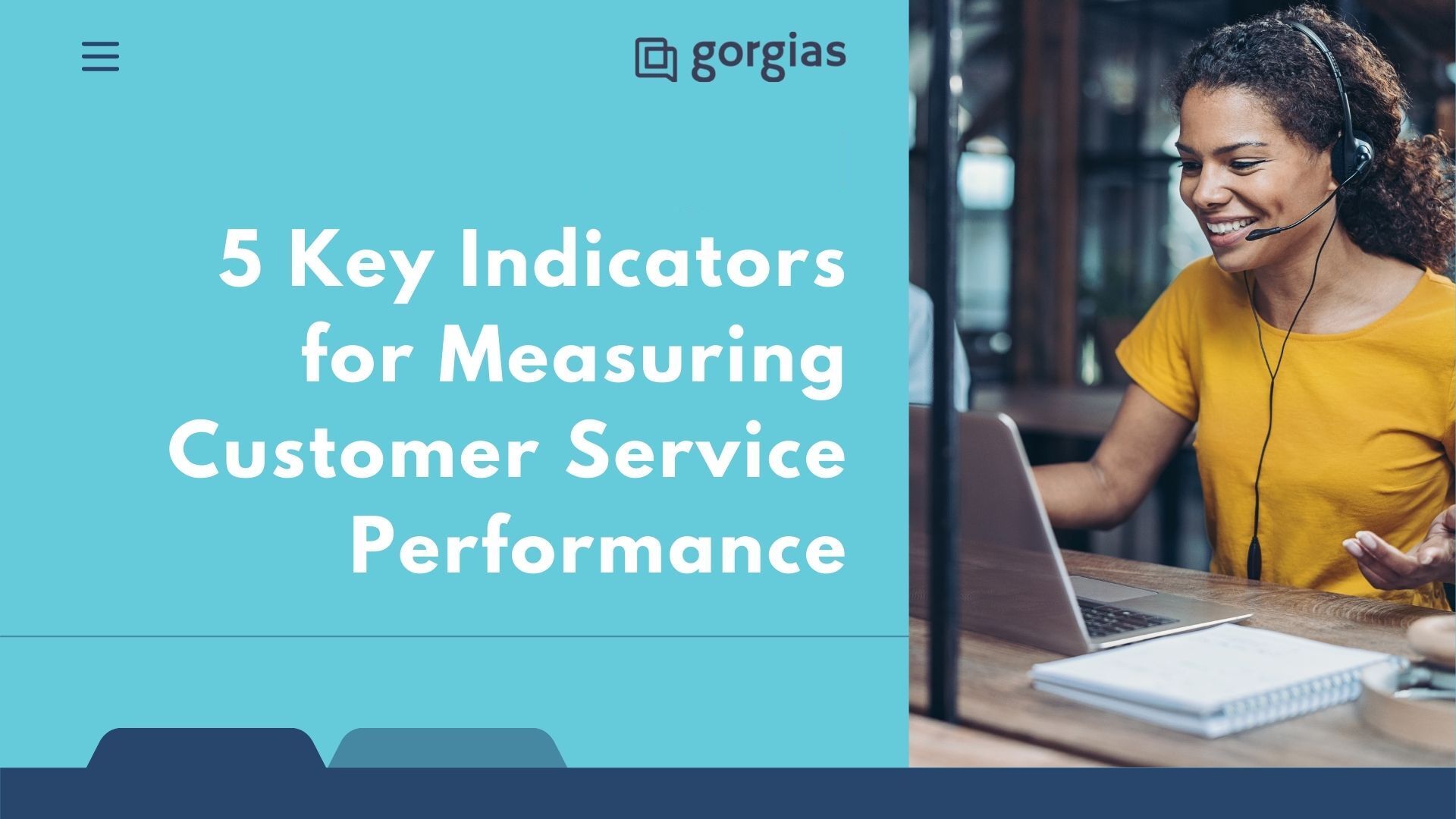
5 Key Indicators for Measuring Customer Service Performance


How do you measure customer service success?
Tracking customer satisfaction is one of the best ways to determine the health and future success of your eCommerce brand. With the right insights, you can get a better understanding of your audience, increase retention and loyalty, and much more.
But unlike sales or subscription data, getting an accurate picture of your customer service performance can be difficult without the right tools in place. So we’ve pulled together five of the best ways to evaluate your customers’ satisfaction.
5 Ways to Measure Customer Service Performance
1. Contact Rate
In all likelihood, your customer support and service teams will be expected to have answers about order status, shipping, returns, and quality assurance (just to name a few) as soon as your buyers complete a purchase.
This means that one of the best ways to ensure that your customer service performance is set up for success is to provide the best possible customer experience before, during, and after the buying process.
That’s why your contact rate — open customer support tickets or requests divided by total orders in a given time period — is such an important metric for measuring customer satisfaction.
If your contact rate is higher than 33%, something is going wrong with your buyer journey. Why do so many customers feel that they need to contact you? Dig into your customer responses and look for commonalities.
Sometimes reducing your contact rate comes down to a few easy fixes. Look at sending or updating order confirmation emails, clarifying shipping information, or adding a live chat help center solution like Gorgias to your eCommerce store.
2. CSAT Score
Even if your contact rate is higher than you’d like, your customers should still feel like they had a positive interaction after connecting with your service team.
That’s where your customer satisfaction (CSAT) score comes in.
You find your CSAT by asking a simple question at the end of the interaction: “On a scale from 1 to 5, how satisfied are you with your experience today?”
You divide the total number of satisfied customers by the number of customers surveyed, multiply by 100, and bang — there’s your CSAT score.
If you’re maintaining a high standard for support, your CSAT score should never dip below four. And with a customer service platform like Gorgias, you can get a big-picture view of your CSAT across your entire customer support ecosystem.
Further, this information will make it easier to spot issues and solve CSAT problems.
3. NPS
The net promoter score (NPS) is a helpful metric for measuring the quality of your customer experience, as it measures your existing customers’ willingness to recommend your business to others.
To find your NPS score, you have to ask customers the NPS feedback question, which is: "On a scale of 0 to 10, how likely are you to recommend our product to someone else?"
Ten represents “extremely likely” and 0 represents “not likely at all.”
When you ask for customer feedback with this question, their ratings will group them into one of three categories: promoters (9 or 10), passives (7 or 8), and detractors (0-6).
To calculate your NPS, calculate the percentage of “promoters” and subtract it from the percentage of “detractors.” (“Passives” are thrown out.)
Let’s say that after your first NPS survey, you found that 65% of respondents were promoters, 10% were detractors, and 25% were passive. Your promoter score in this example would be 55 (65 – 10 = 55).
Looking to leverage NPS for your eCommerce business? Click here to read all about it.
4. Response, Resolution, and Retention Metrics
Another essential data set for measuring customer service performance are your response, resolution, and retention metrics.
Prompt responses are more important than ever if you want your buyers to be happy with their service. And with the right customer service tool in place, you can track and improve your first response time (FRT) so that customers aren’t left to wonder why you aren’t answering them.
A useful customer service tool will also create support tickets that your team can close out to confirm that the related tasks are complete. These efforts are trackable too — by monitoring total resolution time (TRT) you can ensure that your customers are getting the answers and support they need when they need it.
Your FRT and TRT will depend on your niche, but there are some eCommerce customer support benchmarks that your brand should strive to hit or surpass.
Similarly, customer retention is a great indicator of your brand’s health — and your customer service performance.
Your customer retention rate (CRR), which is the percentage of existing customers who remain with you after a given period, and your net revenue rate (NRR), which is the percentage of recurring revenue retained from your existing customer base over a set time period, can give you insight as to whether your support system is succeeding.
5. Support Spending
Finally, the amount of revenue your organization spends on support can also glean important information about your customer service performance.
Your specific amount will vary depending on your industry and company size, but on average eCommerce companies should spend about 10-15% of revenue on customer service.
If you’re spending significantly more (or less) than that, this might be a sign that you need to take a closer look at your customer service performance.
Gorgias is the all-in-one helpdesk that will give you all the insights you need into your customer service performance — and all the tools you need to improve it. Click here and mention “AdLeaks” at checkout for two months of Gorgias for free!





